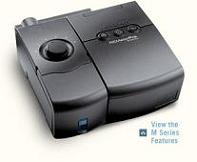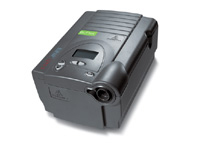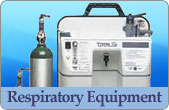Respiratory Equipment
Nebulizers
A small volume nebulizer consists of a compressor to which tubing is attached. The tubing is then connected to a nebulizer medication cup that is fitted with a mouthpiece or mask. Air blows through the tubing and mixes with the medication to form a mist that the patient breathes into the lungs through the mouthpiece or mask. This helps in the treatment of diseases such as pneumonia, chronic, bronchitis, emphysema and asthma.
An ultrasonic nebulizer transports a very dense mist to the patient. Water particles are nebulized by means of sound waves that produce finer particles of moisture. Small-volume, hand-held, portable, battery-operated ultrasonic nebulizers are also available.
Common diagnoses:
Chronic obstructive pulmonary disease (COPD)
Emphysema
Asthma
Chronic bronchitis
Cystic fibrosis
Lung cancer
Acute myocardial infarction
Acute pulmonary heart disease
Viral pneumonia
Bacterial pneumonia
Pneumococcal pneumonia
Oxygen Concentrators
An oxygen concentrator is an electrically powered device with a series of filters that extract oxygen from room air. Also, a backup system, usually a stationary compressed gas system, must always accompany a concentrator in case of power failure or other emergency. Regular household current is sufficient for its use. In limited cases, a humidifier bottle may be necessary to increase moisture to the oxygen as it passes through the tubing to the mask or cannula.
Common diagnoses:
Chronic obstructive pulmonary disease (COPD)
Emphysema
Asthma
Chronic bronchitis
Lung cancer
Acute myocardial infarction
Acute pulmonary heart disease
Congestive heart failure
Viral pneumonia
Bacterial pneumonia
Bronchiectasis

![oxygen[1].jpg](https://images.squarespace-cdn.com/content/v1/5a8b6099f9a61e9d6ff78fa1/1523921708754-Z0OHI0X3BFNT7VXQ2FOE/oxygen%5B1%5D.jpg)


